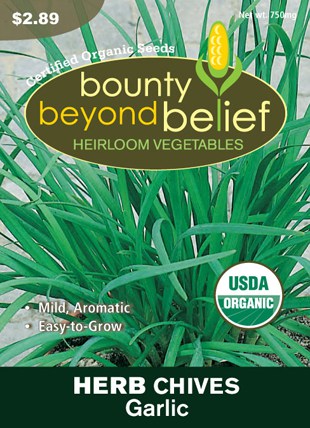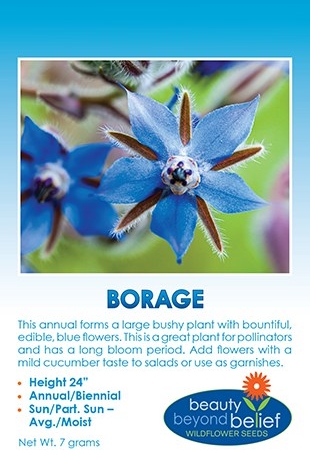Description
Garlic Chives is an heirloom perennial that can overwinter in mild climates and the star-shaped white flowers will be a delight in the garden. The heavy cluster of leaves have a distinct but mild, garlic flavor. The dark, green, 16 in. leaves are flatter and slightly larger than common chives. They multiply rapidly and are hardy, but must be protected during severe winters. Use like common chives, fresh from the garden for garnish or flavor, or chop and dry for later use.
Companion Plants
Grow chives along with parsley, broccoli, cabbage, eggplant, kohlrabi, mustard, peppers, potatoes, rhubarb, roses, squash, strawberries and tomatoes to help those plants. Planting chives with carrots will improve both the growth and flavor.
Beets and carrots are good companion plants for chives. When chives are planted near carrots that have been allowed to bloom, it confuses both onion and carrot flies.
Asparagus, beans, peas and spinach are all bad companion plants for chives.
Germ: 14 days
Maturity: 80-90 days
Net Wt. per Packet: 750 milligrams
Approximate Seed Count: 800 Seeds/Packet
Planting and Care Directly sow into the garden when the soil temperatures are above 70 degrees, or start indoors and transplant to the garden or container. Can be planted in full sun or partial shade. Plant several seeds together or transplant into the garden in groups. Chives are usually not thinned but left to grow in bunches. Germination temp: 70 deg. Divide garlic chives in early spring for easy propagation in mild climates.
Harvest Clip off the long green leaves(stems) as needed with sharp scissors several inches above the basal growth area. After flowering, if the leaves become woody, cut all the leaves down to 3″ for new growth.
Your Health Garlic chives are rich in vitamin C and A, beta carotene, riboflavin, flavonoids and antioxidants.




